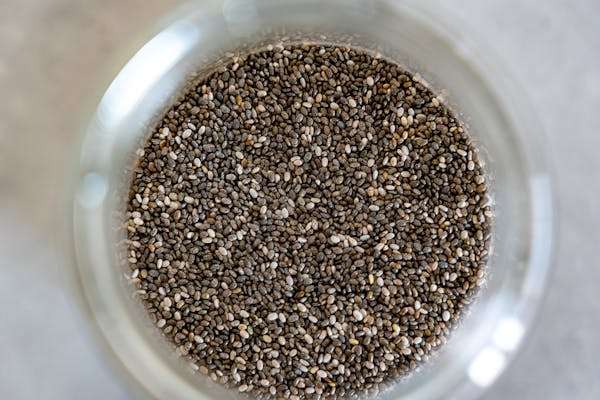During nursing, omega-3 fatty acids are essential for the growth and well-being of both moms and their infants. These vital nutrients have a reputation for improving mental clarity, lowering inflammatory responses, and promoting general health.
Finding the best omega 3 for breastfeeding is essential to optimizing these advantages, as not all omega 3 sources are made equal. The top five sources of omega-3 will be discussed in this post to make sure you and your child are getting the best nutrition possible.
You may effectively boost both your baby’s growth and your health by including these foods in your diet.
Why Omega-3 is Crucial During Breastfeeding:
Omega-3 fatty acids, particularly DHA, are essential for a baby’s brain and eye development. Breast milk is the primary source of nutrition for infants, and adequate omega-3 levels in a mother’s diet ensure optimal transfer to her baby. DHA supports cognitive function, visual acuity, and overall growth.
Best Omega-3 for Breastfeeding
While fatty fish like salmon, mackerel, and sardines are excellent sources of omega-3s, their consumption should be moderated due to potential mercury contamination. Omega-3 supplements specifically designed for pregnant and breastfeeding women offer a safe and reliable alternative. Look for supplements with high DHA content and certified for purity to ensure maximum benefits for both mother and baby.
Criteria for the Best Omega-3 for Breastfeeding:
Choosing the right omega-3 supplement while breastfeeding is crucial for both mother and baby’s well-being. Several factors should be considered when selecting the best omega-3 for breastfeeding.
First and foremost, a high DHA concentration is necessary for the development of an infant’s brain in the supplement. Second, purity is crucial. To be sure supplements are free of impurities like mercury, search for ones that have been approved by independent organizations.
Make sure the dosage satisfies the recommended consumption for nursing mothers when making this consideration as well. Finally, use enteric-coated vitamins to reduce fishy aftertaste and maximize absorption.
Top 5 Sources of the Best Omega 3 for Breastfeeding Moms:
Choosing the right sources of omega 3 is vital for breastfeeding mothers to ensure both their health and their baby’s development. Here are the top five sources that provide the best omega 3 for breastfeeding, each with unique benefits and ways to incorporate them into your diet.
1. Fatty Fish (Salmon, Sardines)
The best natural sources of DHA and EPA are fatty fish, such as salmon and sardines. These omega-3 fatty acids are essential for the development of the baby’s brain and eyes. In addition to being high in these nutrients, salmon, and sardines are safe for nursing women because they have lower mercury levels than other fish. You may greatly increase your intake of omega-3 fatty acids by including these fish in your diet at least twice a week. Try these fish baked, grilled, or mixed into salads for a great twist.
2. Algal Oil
Algal oil is a plant-based source of omega 3, particularly rich in DHA. It is an excellent option for vegetarians and vegans who want to avoid fish-based products. Algal oil supplements are derived from algae, which is the original source of omega-3 in marine life. This makes it a sustainable and environmentally friendly choice. Algal oil is often available in capsule form, making it easy to incorporate into your daily routine and ensuring you get the best omega 3 for breastfeeding.
3. Chia Seeds
Chia seeds are a versatile and nutritious plant-based source of ALA (alpha-linolenic acid), a precursor to DHA and EPA. While the conversion rate of ALA to DHA and EPA is low, chia seeds still provide a beneficial amount of omega-3. They are easy to incorporate into various dishes, such as smoothies, yogurt, oatmeal, or salads. Soaking chia seeds in water or milk creates a gel-like consistency, making them a fun and healthy addition to your diet.

4. Flaxseed Oil
Another great plant-based source of ALA is flaxseed oil. Flaxseed oil should be consumed cold because heating ruins its healthful qualities. Flaxseed oil is a great addition to salad dressings, smoothies, and grilled veggies. Flaxseed oil provides a handy means for nursing moms to increase their intake of omega-3 fatty acids, which benefits the health of both the mother and the baby. For optimal omega 3 for nursing, go out with cold-pressed, premium flaxseed oil.
5. Walnuts
A snack high in nutrients and a rich source of ALA is walnuts. Whether you eat them on their own, add them to salads, or combine them with baked products, they are simple to incorporate into your diet. In addition to providing omega-3 fatty acids, walnuts also provide antioxidants, fiber, and protein.

Eating a handful of walnuts every day can help you satisfy your omega-3 requirements, which will benefit your health and the development of your unborn child.
You can make sure you’re getting the greatest omega 3 for nursing by including these top five sources in your diet. This improves your general health and well-being in addition to your baby’s growth and brain development.
Tips for Maximizing Omega 3 Intake:
Ensuring adequate omega-3 intake during breastfeeding is crucial for the health and development of both mother and baby. Here are some effective tips to maximize your omega 3 intake, helping you to get the best omega 3 for breastfeeding.
Meal Planning and Recipe Ideas
Planning your meals ahead can help you consistently include omega-3-rich foods in your diet. Incorporate fatty fish like salmon or sardines into your weekly meal plan. For instance, try a grilled salmon fillet with a side of vegetables for dinner or sardines on whole-grain toast for a nutritious lunch.

If you prefer plant-based options, add chia seeds to your morning smoothie or sprinkle them over yogurt. Preparing flaxseed oil salad dressings or adding ground flaxseeds to your oatmeal can also boost your omega-3 intake.
Combining Omega 3 Sources
To ensure a balanced intake of DHA, EPA, and ALA, combine various omega-3 sources. For example, mix walnuts into your salads and use algal oil supplements if you’re vegetarian or vegan. This approach ensures that you’re not solely relying on one source and helps provide a range of omega-3 fatty acids.
By diversifying your omega 3 sources, you can get the best omega 3 for breastfeeding and enjoy different flavors and textures in your meals.
Supplements: When and How to Use Them
Although complete meals are the optimal source of nutrition, you can make up any dietary gaps with omega-3 supplements. Select premium supplements that have undergone independent testing to ensure their efficacy and purity. DHA and EPA-rich fish oil supplements are a great option, as are algal oil supplements for a plant-based alternative.
Before beginning any new supplement, speak with your healthcare physician to make sure it is suitable for your needs. Supplements taken with meals improve absorption and lessen the chance of upset stomach.
Smart Snacking
Snacking on omega-3-rich foods throughout the day is an easy way to increase your intake. Keep a bag of walnuts handy for a quick and nutritious snack. You can also make energy bars or bites with flaxseeds and chia seeds for a portable omega-3 boost. Incorporating these snacks into your daily routine helps maintain a steady intake of the best omega-3 for breastfeeding.
Cooking Techniques
Using proper cooking techniques can help preserve the omega-3 content in your foods. Avoid frying omega 3-rich fish, as high heat can degrade the fatty acids. Instead, opt for baking, steaming, or grilling. For flaxseed oil, use it cold in dressings or drizzled over cooked foods rather than cooking with it. These methods ensure you retain the maximum nutritional benefits of omega 3.
By following these tips, you can maximize your omega 3 intake, ensuring you and your baby receive the full range of health benefits from the best omega 3 for breastfeeding.
Conclusion:
Maximizing your omega-3 intake during breastfeeding is essential for both maternal and infant health. By incorporating a variety of sources like fatty fish, algal oil, chia seeds, flaxseed oil, and walnuts, you ensure you’re getting the best omega 3 for breastfeeding.
These tips and meal ideas can help you and your baby enjoy the full benefits of omega 3, supporting brain development and overall well-being. Prioritize these nutrient-rich foods for optimal health. Click to learn more.
FAQs:
- What is the best omega 3 for breastfeeding moms?
The best omega-3 for breastfeeding moms includes sources rich in DHA and EPA such as fatty fish, algal oil, chia seeds, flaxseed oil, and walnuts.
- How much omega-3 should I consume while breastfeeding?
It is recommended to consume at least 200-300 mg of DHA per day while breastfeeding, but always consult your healthcare provider for personalized advice.
- Can I take omega-3 supplements while breastfeeding?
Yes, omega-3 supplements can help meet your DHA and EPA needs. Choose high-quality, third-party-tested supplements and consult your healthcare provider before starting.
- Are plant-based omega-3 sources effective for breastfeeding moms?
Yes, plant-based sources like chia seeds, flaxseed oil, and algal oil provide ALA, which the body can convert to DHA and EPA, though the conversion rate is low.
- Why is DHA important for my baby during breastfeeding?
DHA is crucial for your baby’s brain and eye development, making it an essential component of the best omega 3 for breastfeeding.
